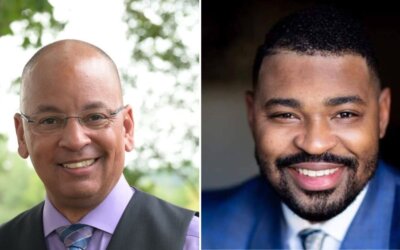
Photo by Alexander Grey on Unsplash
With the new fiscal year well underway, Virginia’s governor is touting his accomplishments across the commonwealth but still can’t get lawmakers to agree on how to spend the state’s $3.6 billion budget surplus.
“The governor wants what he wants and has not been willing to give.”
These words were spoken by a member of Virginia Gov. Glenn Youngkin’s own party when he was asked to weigh in on the continuing impasse over the state budget.
Republican state Sen. Emmett Hanger, who is serving as one of his party’s key budget negotiators, seems as disaffected as some of his Democratic colleagues as the impasse over key amendments to Virginia’s budget continues.
The ongoing budget impasse marked the first time since 2001 that Virginia began a new fiscal year (which begins on July 1) without a revised budget. The two-year budget lawmakers passed last year remains in place, so governmental operations are generally continuing without significant interruption – although uncertainty remains over certain specific funding levels for various state programs.
The nature of the current budget impasse between the Democratic-majority state Senate and the Republican-controlled House of Delegates centers around about $1 billion dollars worth of tax cuts and rebates. Democrats want to send one-time rebate checks directly to taxpayers ($200 for individuals, $400 for couples filing jointly) while also investing in underfunded government services, including public education and behavioral health. Republican proposals include cutting those rebates in half, cutting business taxes, and altering the income ranges for some tax brackets.
Meanwhile, Youngkin is pushing to use taxpayers’ extra money to give permanent tax cuts to corporations and the richest Virginians.
Youngkin also announced last week that Virginia ended its fiscal year with a $5 billion surplus, far outstripping the previous estimate of a $3.6 billion surplus.
The impacts of the governor’s and the legislature’s failure to reach a compromise over how to spend the billions of dollars at issue are myriad, but as August and the new school year draws near, the state’s education system is suffering acutely.
Specifically, school boards and school systems rely on each year’s budget agreement to discover how much funding localities will receive for the coming year, and school system budgets are adjusted accordingly.
As lawmakers continue to debate the state’s budget amendments, a recent report released by the Joint Legislative Audit and Review Commission (JLARC), which exists as a sort of state government watchdog, revealed massive funding shortfalls that exist within Virginia’s existing school funding system. Because of the current funding mechanism, Virginia school districts receive less funding per student than most of its neighboring states.
The extensive study, which the General Assembly requested in 2021, revealed that the funding formula that the state uses to determine how much money local school divisions receive each year allocates “far less than needed to sufficiently fund Virginia’s school system” – specifically, 14% less than the national average, or about $1,900 less per student.
Specific flaws in the funding formula identified by the JLARC study include underestimating salary costs by underweighting salaries in the Virginia’s largest school divisions; ineffectively accounting for the number of higher-needs students a school division has due to poverty, special education needs, and immigrant students learning English; failing to account for dramatic differences in labor costs found in different parts of the state; and overlooking the specific difficulties faced by very small, mostly rural school divisions.
The JLARC report made both short- and long-term recommendations to remedy this epic funding gap, to the tune of $1 billion and $2.5 billion, respectively.
About $20.1 billion currently funds the state’s K-12 public schools; roughly 39% of that money comes from the state itself, 52% comes from localities, and federal funding covers about 9%.
Other implications include of an unresolved state budget include:
Virginia’s state parks are slated to receive more funding to hire additional staff, but those hires will remain in limbo until a budget agreement is reached.
Behavioral health program reforms that were to take effect on July 1 are being delayed pending a budget agreement.
Budget negotiations, which had been stalled for almost a month, resumed quietly late last week as leaders from both parties continued to debate a compromise agreement.

Here’s everything you need to know about this month’s Mercury retrograde
Does everything in your life feel a little more chaotic than usual? Or do you feel like misunderstandings are cropping up more frequently than they...

VIDEO: Check out Dogwood’s new merch line
Big news, Virginia! We've officially launched our Dogwood merch line 🎉 This year, we celebrate 5 years of bringing you Virginia news you can use....

VIDEO: Your support matters!
Your support matters! Donate today. @vadogwoodnews Your support matters! Visit our link in bio to donate today. #virginianews #virginia #community...

Op-Ed: Virginia’s new Democratic majorities pass key bills to improve your lives, but will Youngkin sign them?
The 2024 Virginia General Assembly regular session has wrapped up. It was a peculiar session from the outset, with Democratic majorities in the...

From the state rock to the state flower, here’s how Virginia got its symbols
Have you ever wondered why the Dogwood is the state flower? Or how the cardinal became the state bird? We’re here to answer those questions and more...

VIDEO: Second-gentleman Douglas Emhoff gives speech on reproductive freedom
Second gentleman, Douglas Emhoff touched on reproductive freedom not only being a woman's issue but "an everyone's issue" during the Biden-Harris...





